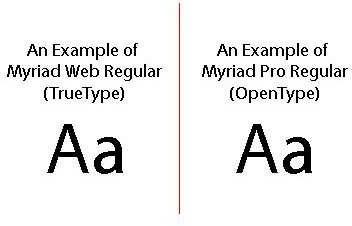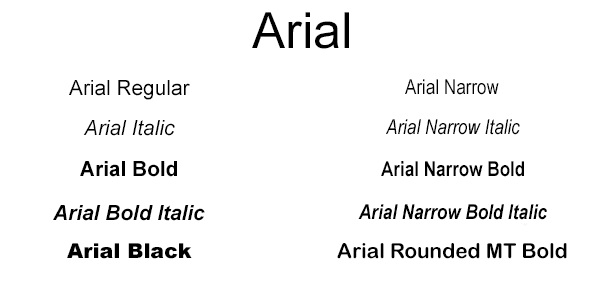

Letters in monospaced typefaces each occupy the same amount of horizontal space-think of typewriters or MS-DOS, or typefaces like Courier New.

They’re not suitable for use for body copy, as they can be hard to read at small sizes. In modern UX design, you’ll commonly see them in headlines and titles. They first appeared during the Industrial Revolution and were originally used most often in posters and commercial printing. There are display typefaces for virtually any occasion or type of design since they draw inspiration from a range of typefaces and font styles. Display typefaces are a motley crew and anything but modest. Handwriting typefaces are perfectly suited to represent a person’s signature (such as signing off on an email newsletter) or for short headlines. They’re generally very casual typefaces and should be used only for creative flair. Similar to script typefaces, handwriting typefaces mimic a person’s handwriting. They’re suitable for headlines, titles, and logos, but don’t work well in large blocks of text or at small sizes, where they can be very difficult to read. Script typefaces vary widely and can evoke anything from a very feminine, laid-back feeling to a very formal feeling. Script typefaces get their origins from handwriting and calligraphy. Script typefaces are most commonly seen in things like logos (think of the Coca-Cola logo for an example). They’re also generally best-suited to shorter pieces of text, such as headlines or titles. The downside to slab serifs is that they can be challenging to pair with other typefaces due to their massive, block-like shapes, which can overpower other typefaces. They were often used in early newspaper advertisements, as their blocky shapes were more eye-catching than more traditional serif and sans-serif typefaces. Slab serif typefaces shook up the entire typography world when they were released in the 19th century with their robust look-they are bold, thick, and may have either rounded or angular serifs. Sans-serif typefaces are sometimes thought of as having less personality than other typeface varieties, though that’s largely dependent on the context in which they’re used and the specific typeface in question. They became popular in print advertising and are often thought to be more readable on-screen than serif typefaces, though that is widely debated. While they come across as quite modern, the first sans-serif typeface was Caslon Egyptian, designed in 1816 by William Caslon IV. Sans-serif typefaces are, quite literally, “without serifs”-they do not include decorative strokes at the ends of the letters. They’re excellent for a product or brand that wants to create a trustworthy, reliable, and even formal image. Because of their rich history and long-standing usage, they can give users a feeling of class, romance, and sophistication.

Serifs are very traditional and were originally popularized by early print magazines. They’re one of the oldest types of fonts, dating back to the 1470s and Nicolas Jenson’s Roman Type. Serif typefaces include slight decorative strokes (called serifs) at the end of letters. It all depends on how you break them down. Depending on who you ask, there are anywhere from five to eight (or more) different varieties of typefaces. Understanding the varieties of typefaces available, the moods they can create, and what they’re each suitable for is key to using type effectively to create exceptional user experiences.


 0 kommentar(er)
0 kommentar(er)
